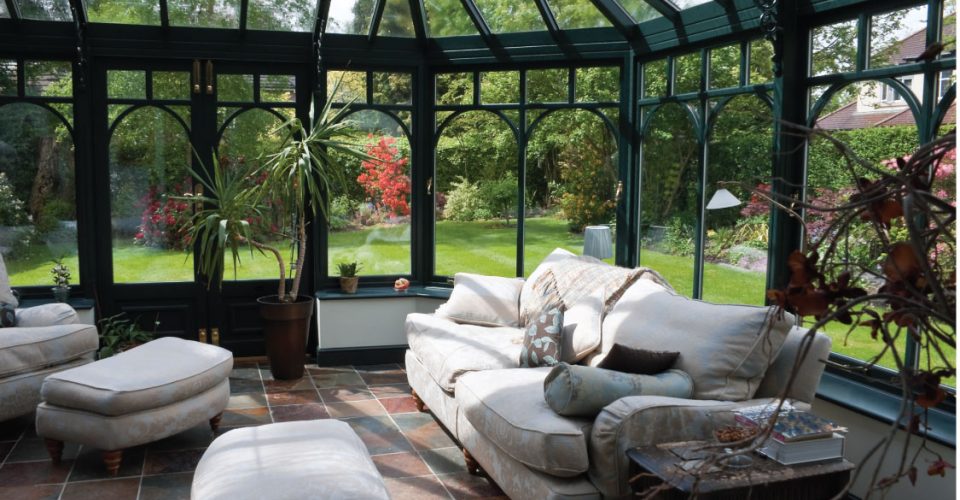The Pros and Cons of Building Your Own Conservatory
Conservatories are becoming more and more commonplace these days, with many people choosing them as a cost effective way of increasing space and adding value to their home.
Conservatories are used mainly as a sun room or lounge area, or as a dining room – typically to give much needed space for homes that only have small kitchen diner combos. Of course there are other uses for a conservatory, but those are the most common.
When opting for a conservatory for your home you are given a few options; get in the experts or build your own.

Choosing the experts
Obviously employing the talent of professionals will be the easier option, but you also then have to factor in labour costs, which can be expensive. There is also the fact that they are only going to work set hours, and you may have to leave your home in their hands whilst at work, something not everyone wants to do.
Doing it Yourself
Building your own has its own pitfalls though. First the chances are you aren’t a professional, and that you haven’t build a conservatory before either. So while there are no labour costs, you are typically going to be dealing with amateur builders (that’s you!).
Then you have to ensure you get the right conservatory for the job, ensure all the measurements are correct, and that you have all the right tools and supplies you are going to need. On the plus side there are a lot of easy to build DIY conservatories available on the market and reputable conservatory manufacturers will point you in the right direction.
Regulations and Dimensions for a Conservatory
You can’t just bang up a conservatory of any size; there are regulations that were commissioned back on October 2008 that restrict how big a conservatory can actually be. The rule is that it cannot be higher than your homes original roof and no deeper than 3 metres (or 4 meters if your home is detached). There are exceptions to this rule, but to be sure ask the supplier you are buying the conservatory from and they should be happy to help.
Which Conservatory?
DIY conservatories (or self build conservatories) come in many styles and the chances are you will be able to get one that suits your desired needs.
White is the most common colour, as it tends to match most people’s current windows, but several other colours and finishes are available depending on your requirements.
Common styles include lean to conservatories due to them being functional yet small (and easy to install), Victorian conservatories and Edwardian conservatories (being grander and more stylish than many other conservatory types). Whatever your choice you should be able to find something very close to what you want, if not a perfect match. It’s worth noting that wood grain conservatories can suffer from colour-loss from weather conditions, so make sure to find one guaranteed against this.
The roof for your conservatory is another choice. Do you go for a polycarbonate roof, or a glass one? The choice is yours, but it pays to talk with your supplier to get their input, but typically a glass roof will be the more stylish option, allowing in more light.
Then there is the opposite end of the scale, the floor. Laminates and tiles are fairly common flooring solutions, being hard wearing, easy to clean and fairly inexpensive. Other options include real wood flooring and natural stone tiles, but these are much more expensive and can be harder to maintain.
Finally don’t forget you need windows for your conservatory, that’s right you are going to add amateur glazier to your skill repertoire as well. Choice range from plain windows to tinted glass through to stained and patterned glass; consider how it will look on the finished product and take into account you conservatories styling.
How Much Does a Conservatory Cost?
You need to take into account the cost of the conservatory itself, the flooring, glazing and the tools and materials to get it erected. But on top of that don’t forget other parts of the equation such as do you want under floor heating (very important in the winter) or air conditioning, not to mention the furnishings and other options such as blinds. Of course some of that can be worried about after the conservatory is built, but heating and air con is best addressed during construction.
Time
Depending on the time available to you a conservatory can be built in a relatively short period of time, however if you work full time, that can be another stumbling block. Having to take time off to build your conservatory can be another expense, so to speak, as if you are booking time off that less holiday time for you.
The Choice
With all of this taken into consideration the choice is down to you.
Though the DIY option seems to have more pitfalls (and technically it does) it can be very rewarding and can work out cheaper (even more so if you know someone who has the tools and some previous history to give a hand). Plus you have full control, choose when to work on it and can ensure every step is to your specifications.
On the flip side a professional has done this job a lot more times than you, has all the tools and materials required and often come as a package deal from the suppliers of the conservatory. They can also install a larger range of conservatories that may be a big beyond the skills of a talented amateur. However they can be expensive, only work specified hours and your leaving the whole process in their hands, so if things go wrong they are accountable, but they might not do things just how you want them.

